Vitis vinifera
A muse. A passion. An indulgence.
Some see it as a common table grape. Some see it as a feedstock for Franzia. Others see it as a canvas, an expression of the earth at a distinct time and place.
It's a crop that's cultivated on every continent except Antarctica whose scientific name is probably just what the Romans called it. While an estimated 10,000 varieties exist, only a handful are known by your average tippler - your Cabernets, your Merlots, your Pinots, Chardonnay. I would be remiss if I did not mention that these varieties are actually cultivars, at least according to the International Code of Nomenclature for Cultivated Plants, the membership of which must be an absolute joy at a party. While "variety" is technically incorrect nomenclature, the term has so strong a foothold in the wine world that the nerds over at the ICNCP begrudgingly make an exception.
I was quite surprised to learn the most grown grape variety is one I've never heard of - the Kyoho, a large, sweet grape that rose from the ashes of post war Japan. As with just about anything "most" it's grown predominantly in China, accounting for 90% of its acreage. A more familiar cultivar, Cabernet Sauvignon, comes in at number 2, growing around the world in nearly 30 countries. The only varieties that are grown more places than Cab Sav are Syrah, Merlot, & Chardonnay.
The country that boasts the largest area devoted to grape production is Spain, more than doubling the US, who comes in at 5th. Inexplicably, not all grapes are dedicated to wine, a fact that leapfrogs Italy & France ahead of Spain for the top wine producing countries, with the US slotted at 4. China drops from 2nd in grape acreage to 10th in wine production. Of all the wine produced in the US, over 80% is grown in California.
Golden State Viticulture
The history of wine in California is long and rich. It was originally cultivated in the 18th century by missionaries who produced it to alchemically convert into god/human blood for the sacrament. The original center of wine production was Southern California, however the gold rush of the mid-19th century brought a horde of thirsty prospectors to Northern California. Fortuitously, the Mediterranean climate of Northern California, which is only found on 2% of the Earth's surface, was ideally suited for viticulture. Year round sunshine is tempered by cool Pacific air to create an ideal setting for l'uva - not too hot, not too cold. The region's diverse panoply of soils contributes to distinct minerality among, and even within, regions.
California wine occupied a niche status until the '70s, when Steven Spurrier, a British oenophile and admirer of Golden State wines, organized the Paris Wine Tasting of 1976. This event pitted California wines against French heavyweights from the prestigious regions of Bordeaux & Burgundy in a blind tasting by a coterie of stuffy French connoisseurs. In a shocking upset that launched California wine into the global consciousness, Cali claimed the top spots in both the red & white categories - the Stag's Leap Wine Cellars '72 Cabernet Sauvignon & the Chateau Montelena '73 Chardonnay, respectively.
The event wasn't much hyped outside of wine snob circles, with only a single journalist assigned to cover it. George Taber's article in Time Magazine Judgment of Paris chronicled the tasting, leaving us with such gems as "ah, back to France" after a judge tasted a Chardonnay from Napa, and "that is definitely California. It has no nose" after another tippled an offering from Burgundy. Pardon Pierre, not so fast.
All this is to say, I'm ready to guzzle some grape.
But First Things First. I gotta pick up Mikey Bob.
My cousin Michael is flying in from Brooklyn to accompany me on the Pacific Northwest leg of my journey. His flight lands at SFO around 4 PM, which means I'll have some time to kill. The journey from Sacramento is only about an hour, culminating with a drive over some big orange bridge. I stop off at the Presidio to cruise around, take in the sights, and feel the the Bay breeze on my face.
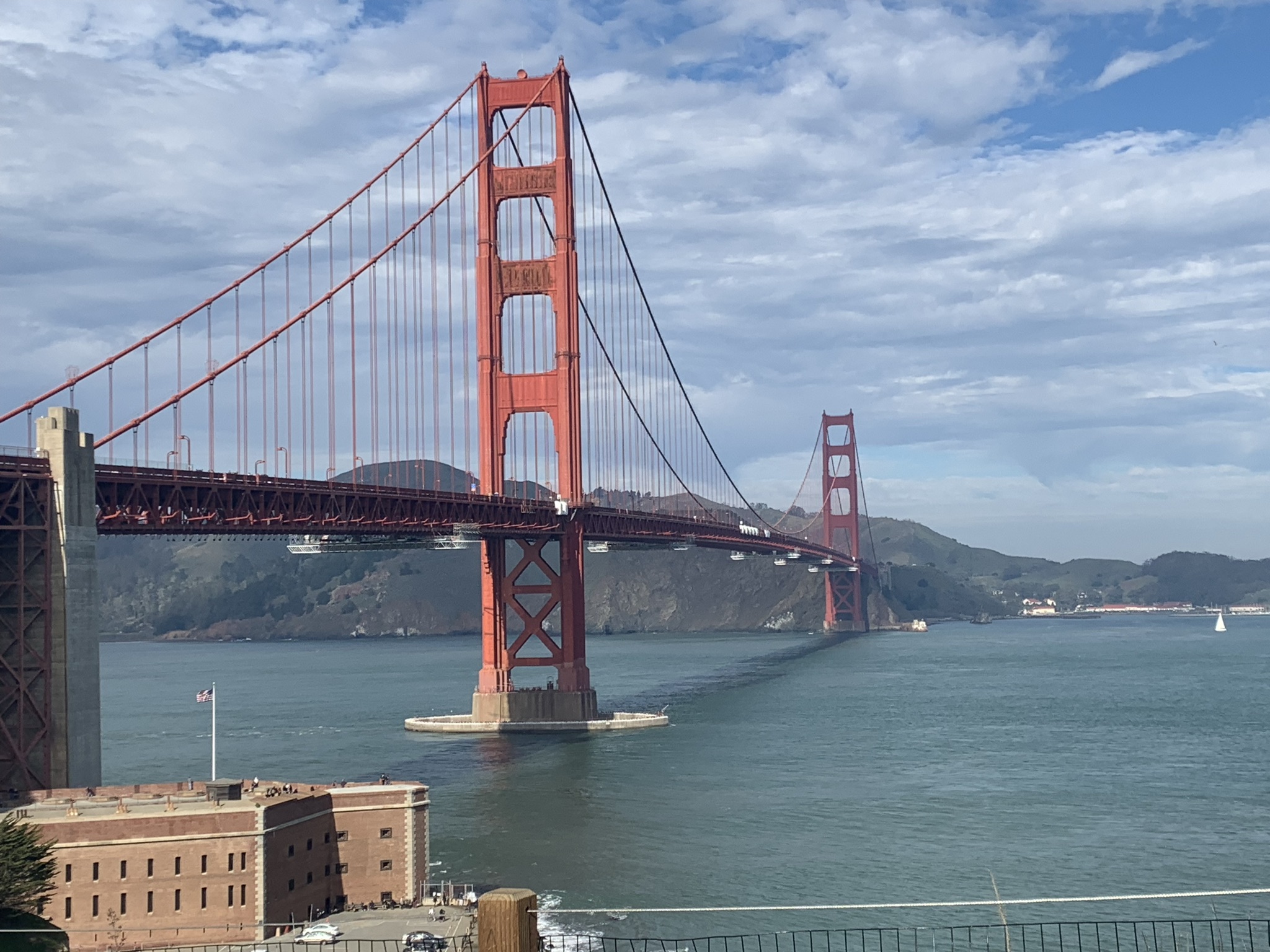
Now, if there's anything that gets my juices flowing more than wine and Josh Allen's meaty thighs it's bridges. Hold onto your butts.
Bridge Class is in Session
Starting in 1820, a ferry served the San Francisco peninsula from Marin County. The idea of a bridge across the Golden Gate was certainly not radical - any jamoke with a map could tell you a bridge might be of some use. However the swirling currents across the 6,700' strait, coupled with frequent strong winds left the idea of a bridge as just that, an idea.
The original proposal to span the Golden Gate was made in 1869 by a fella by the name of Joshua Norton. After losing all his money, and presumably his marbles, in an attempt to corner the rice market, he declared himself Norton I, Emperor of the United States & Protector of Mexico. Emperor Norton spared no time flexing his self-appointed imperial muscle, issuing decrees that were sometimes fanciful, often audacious, and always entertaining. A selection of some, but not all of Emperor Norton's royal decrees: on 16-July 1860, he dissolved the United States of America, which was curiously followed three months later by a decree that barred the seemingly dissolved US Congress from meeting in Washington D.C.; on 16-December 1869, a day after setting off for Sacramento to seek his yearly tribute from the legislature, he demanded that the city clean its muddy streets and install gas lamps; and on 12-August 1860, in perhaps the most sensible of all of Norton's decrees, he abolished the Democratic & Republican parties.
Emperor Norton's eccentric reputation permeated the city of San Francisco, so much so that after an arrest by an overofficious police officer in 1867, his majesty was released with an apology from the police chief. After his arrest, all SF police officers began to salute the Emperor when they passed him on the street. On 8-January 1880 Norton died in San Francisco, occupying the murky space in the public consciousness between nutcase and hero. 10,000 people turned out for his funeral and the city marked the 100th anniversary of the death of its only monarch in 1980.
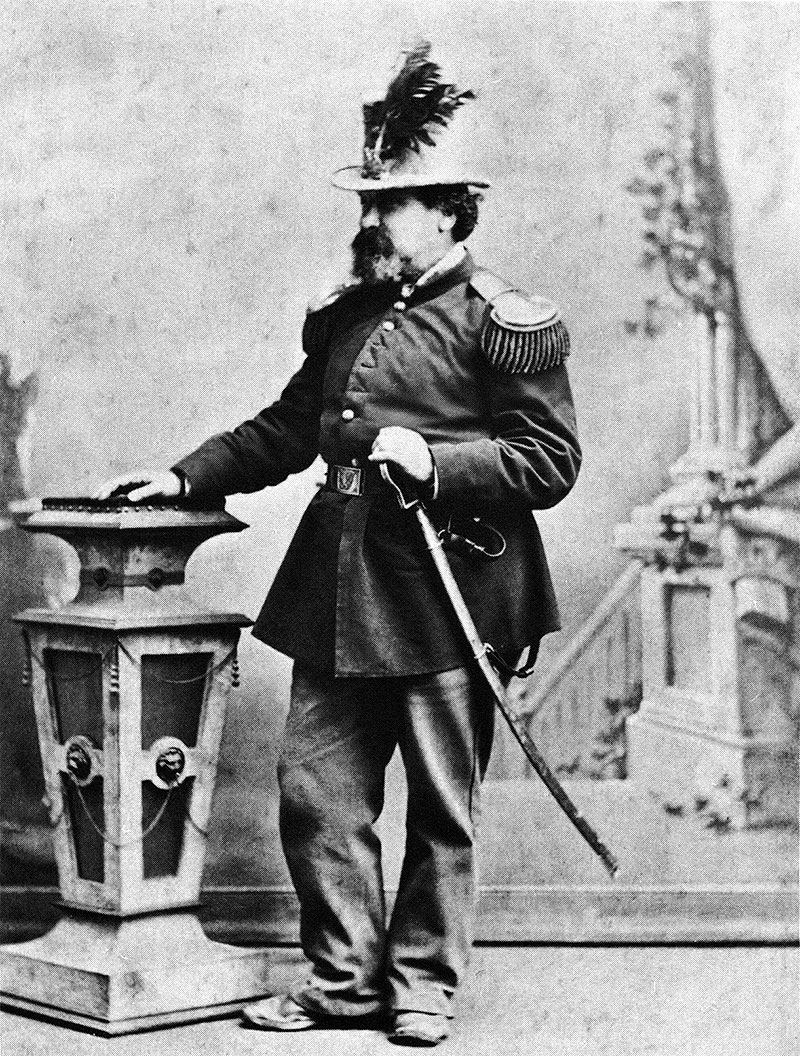
None of that has anything to do with the actual building of the bridge. I just couldn't help myself. It's such a quirky tale from one of our quirkiest cities. It's hard to say whether it's a charming story of a city rallying around it's most famous eccentric, or a sad story of a man with obvious mental health issues who wasn't in on the joke. Perhaps it's a little of both.
Anyhoo, just 5 months after the Emperor issued his most sagacious decree abolishing the Democratic & Republican parties, Joseph Baermann Strauss was born in Cincinnati. A city that, only 3 years earlier, opened the longest suspension bridge in the world to horse and buggy traffic. It held this title until 1883, when the Brooklyn Bridge indelibly linked the boroughs of Manhattan and Brooklyn. The commonality: both bridges were designed by the same man, John Augustus Roebling. The Cincinnati bridge, officially known as the John A. Roebling Suspension Bridge, is essentially a smaller version of the Brooklyn Bridge. Check it out, it's pretty cool.
I mention Strauss because it was he who crafted the first serious proposal to span the Golden Gate. He responded to a request from city engineer M.M. O'Shaughnessy, my *second* favorite civil engineer, to study the feasibility of a bridge across the strait. Strauss's original design called for a massive cantilever-suspension hybrid bridge, a proposal that was conditionally approved by local authorities. The condition: for the love of god update the design, I mean this thing is ugly as hell.
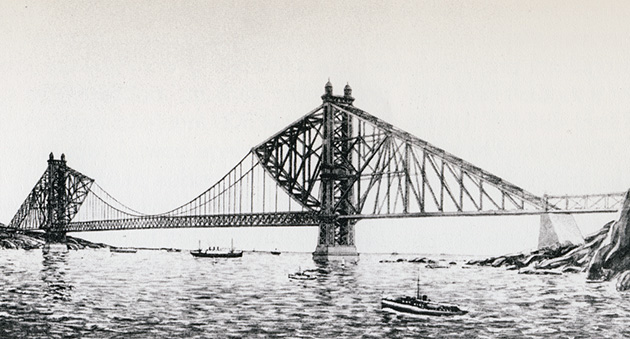
The man we can thank for the graceful art deco design of the Golden Gate Bridge is Irving Morrow. Morrow, a local architect, also chose its iconic color - international orange, a color that contrasts with the surrounding sea, sky, and land regardless of the weather or season. The engineering calculations were spearheaded by Leon Moisseiff, one of the principal engineers on the Manhattan Bridge. Despite his magnificent contributions to the built environment, Moisseff is perhaps most well known as the designer of the Tacoma Narrows Bridge, a bridge in the Seattle area that failed in spectacular fashion. If you've seen black & white footage of a bridge swinging wildly in the wind before collapsing to the water below, that's the one. Leon received a harsh lesson in the perils of hubris (and torsional flutter) after declaring the bridge "the most beautiful bridge in the world" soon after its completion.
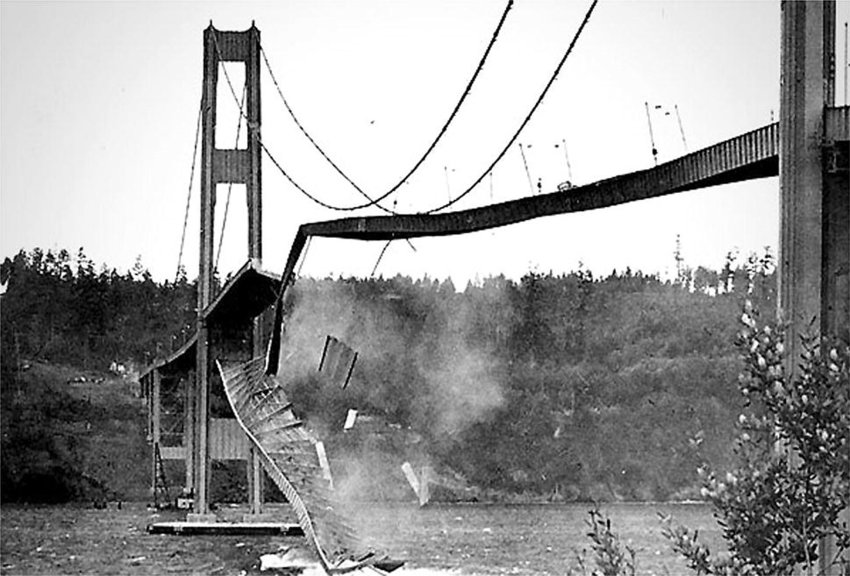
By late 1929 the design, funding, permits, and approval from the War Department (who needed to sign off on any bridge that might affect ship traffic) for the Golden Gate Bridge had all been secured. Like a new restaurant opening in the spring of 2020 the timing couldn't have been worse. The Great Depression came crashing down, throwing everything into limbo. Remarkably the economic malaise only delayed construction a few years, with groundbreaking occurring in January 1933.
In April of 1937 the final rivet was driven and the bridge opened to vehicular traffic on 28-May 1937, when FDR pressed a telegraph key in the White House to announce the event to the world. In a testament to the novel safety standards implemented during construction - including a safety net that was strung below the road deck that saved the souls of nineteen lucky men - the bridge was nearly completed without the loss of a single life. However, just six months before completion, an ironworker named Kermit Moore was crushed by a falling beam, and the following February 11 more men perished when a section of road deck fell and crashed through the safety netting.
Despite these tragedies the bridge was completed under budget and ahead of schedule, a feat that seems almost unimaginable today. It was the longest and tallest suspension bridge in the world from its opening in 1937 until the Verrazano-Narrows Bridge (yes that Verrazano-Narrows Bridge) surpassed it in length in 1964, and the Mezcala Bridge in Mexico surpassed it in height in 1993. To bring it full circle, the suspension cables were installed by none other than John A. Roebling's Sons Company. Remember that guy?
Ok Where Were We?
After perusing the grounds around the Southern end of the bridge, I head over to a coffee shop in Russian Hill to wait on Mikey's flight. As I'm sitting there enjoying my java I get a text from a friend about the Cowboys-49ers game.
Hold up.
I'm in San Francisco and the '9ers are playing... What the hell am I doing at a coffee shop? What the hell are all these people doing at a coffee shop???
Good lord. I pack up my things and set off in search of a public house to catch the game. As I pass people on the streets I don't see a single 49ers shirt, jersey, hat. Nothing. What is going on?? Apparently globalization hasn't left this town a rusty husk of its former self, exposing a cavernous wound in the collective psyche that can only be filled by modern day gladiatorial contests and gallons of ale.
Weird.
I stumble into The Buccaneer, a wood paneled dive that happens to have a couple spots at the bar. Again, how this place is not crammed wall to wall blows my mind. I plop down and order The City IPA from Calicraft. I hand over my ID & vax card to Emily, the cheery bartender.
"Oh we have a Cowboys fan here"
I shoot her a quizzical look from under my Buffalo Bills toque. Then I look down to see my Texas drivers license.
"Oh no, no, oh god no. NOT a Cowboys fan. I was just living in Texas against my will. In Houston, no less -go Necks-. I'm actually a Bills fan, we had a nice easy W last night against the Patriots JV team"
"Oh that's hilarious, this is actually a Patriots bar."
"Ha, a lot of sad folks in here last night?"
"Yeah but they all bought me drinks because it was the last game of the season, we actually got pretty shitfaced"
Hell yeah Emily.
It's about halfway through the 3rd, Dallas ball, 'boys trailing 16-7. On 2nd & 28 Dak throws a pick to K'Waun Williams. File that under "things you just love to see." The very next play Deebo Samuel takes a sweep to the right 26 yards to the house. 23-7 San Fran. The Buc goes wild. Thank the good lord there are at least some football fans on this peninsula.
Mikey's flight lands with about 2 minutes left in the game. I let him know I'll head to the airport upon its conclusion. On 4th & 11 from midfield Dak just barely misfires down the field to give the '9ers the ball with 1:49 left. A first down should just about seal the deal. On 3rd & 10 the '9ers dial up a beautifully designed reverse to the right, with the left guard, right tackle, and tight end leading a convoy that allows Deebo to fight for the first down. Well that should just about do it.
I settle up with Emily and she pours us a shot of Jameson because that's how she rolls. As I'm on my way back to the car I get a text from Mikey
"You think they overturn this?"
Uh wut?
Apparently Deebo didn't get the first down and the call is indeed overturned. I'm already on my way to SFO so I don't get to witness the end-game clock management disaster in real time. I did watch it a bunch of times after and laughed maniacally at Mike McCarthy big dumb face. Nothing like a little Sunday schadenfreude.
It's a short drive to the airport where I scoop the boy and set our course for Mike's cousin Heather's house in Hercules, CA. I don't take for granted that even my cousin's cousin opens her house to a distant non-blood relative. I'm pretty lucky to have such an amazing family.
Ok One More Bridge
On the way we drive over a bridge that I appreciate even more than the Golden Gate Bridge: the East Span of the San Francisco-Oakland Bay Bridge. To the naked eye it's a graceful suspension bridge emanating from a single sleek tower. But the real beauty of this bridge is in the engineering. It's a longitudinally asymmetrical self anchored suspension bridge, the longest of its kind in the world. The bridge it replaced was a double balanced cantilever span, a utilitarian design that makes heavy use of steel - think old-timey railroad bridge. When considering proposals to replace this bridge (the one that partially collapsed during the 1989 Loma Prieta earthquake) the Metropolitan Transportation Commission, as well as the general public, had a desire for a signature span, a design that would stand out in the Bay Area skyline and hold its own against the other iconic bridges in the area.
The suspension bridge is so much a part of the Bay Area identity that you'd almost have to choose a suspension design. However, due to the geography of the area, an anchorage point is only available at one end at Yerba Buena Island. The engineers could rip a play out of the western span's playbook and build a massive concrete anchor into the muddy soil of the bay, however a more elegant design was chosen - the self anchored suspension bridge. This design doesn't need any anchorages, since the the main cables are anchored into the bridge deck itself. It's like holding a deck of cards by the end and squeezing, creating a upwards bend in the middle. Any traffic that enters the bridge causes the bridge deck to bow down, pushing the ends outwards, which is opposed by the main cable. It's innovative, intuitive, and beautiful.
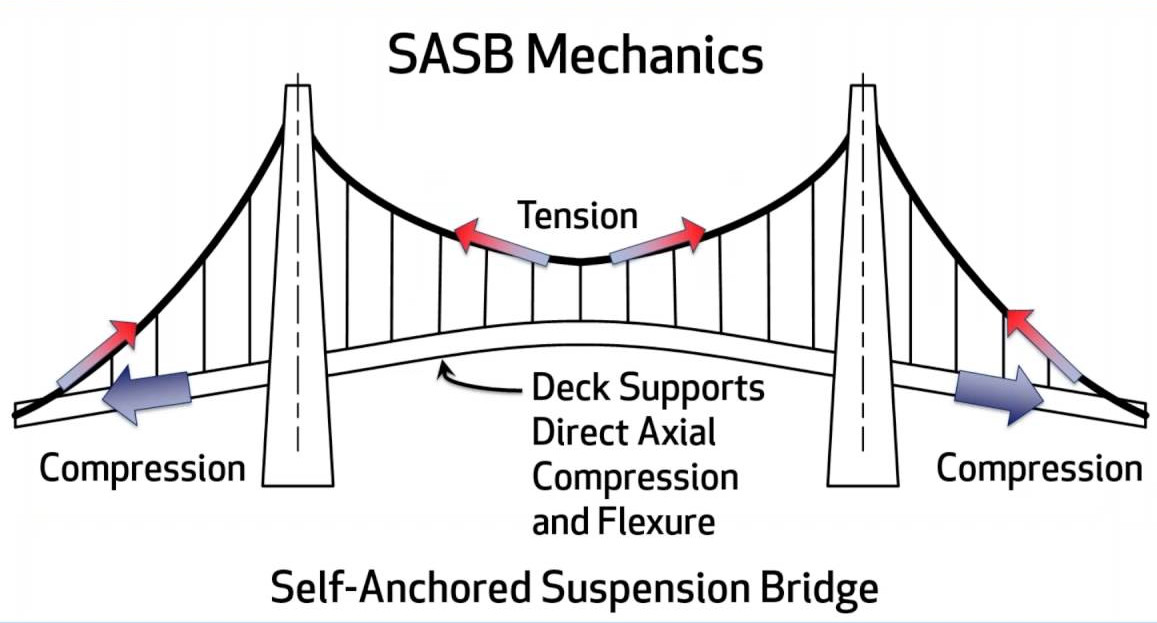
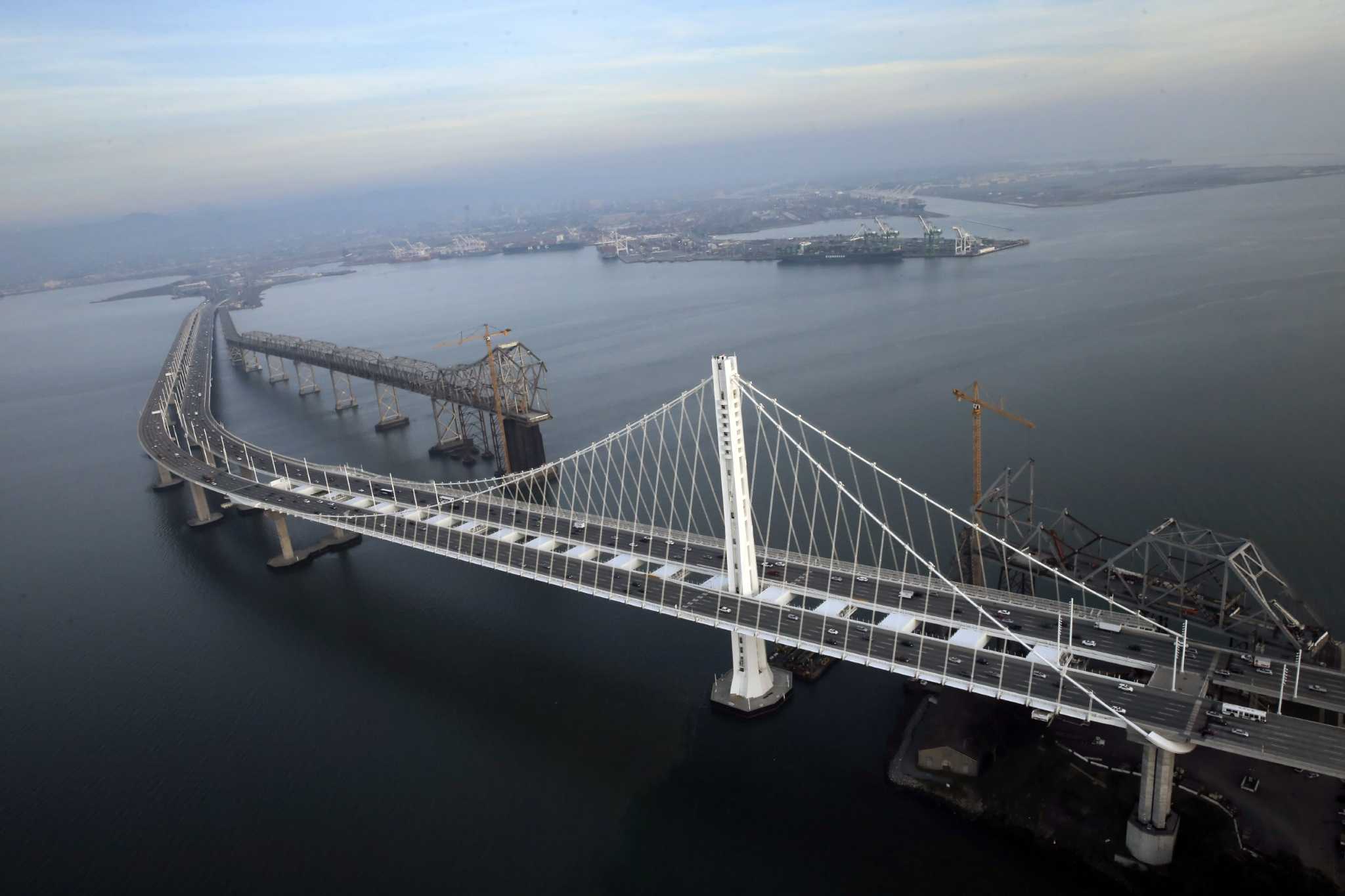
One last bit on the bridge. In 2004, the San Francisco Board of Supervisors passed a resolution to name this span after our old friend Emperor Norton. Seriously. Unfortunately the super lame Oakland City Council was not keen on this and shot it down, leaving the bridge without an official name. Perhaps Emperor Norton should issue a posthumous decree to do what those cowards in Oakland wouldn't.
Enough About Bridges Aready, My God
We make it over to the East Bay and scoot up to Heather's place. Mileage total: 2,433 miles, the distance from Philly to Vegas. Not too shabby.
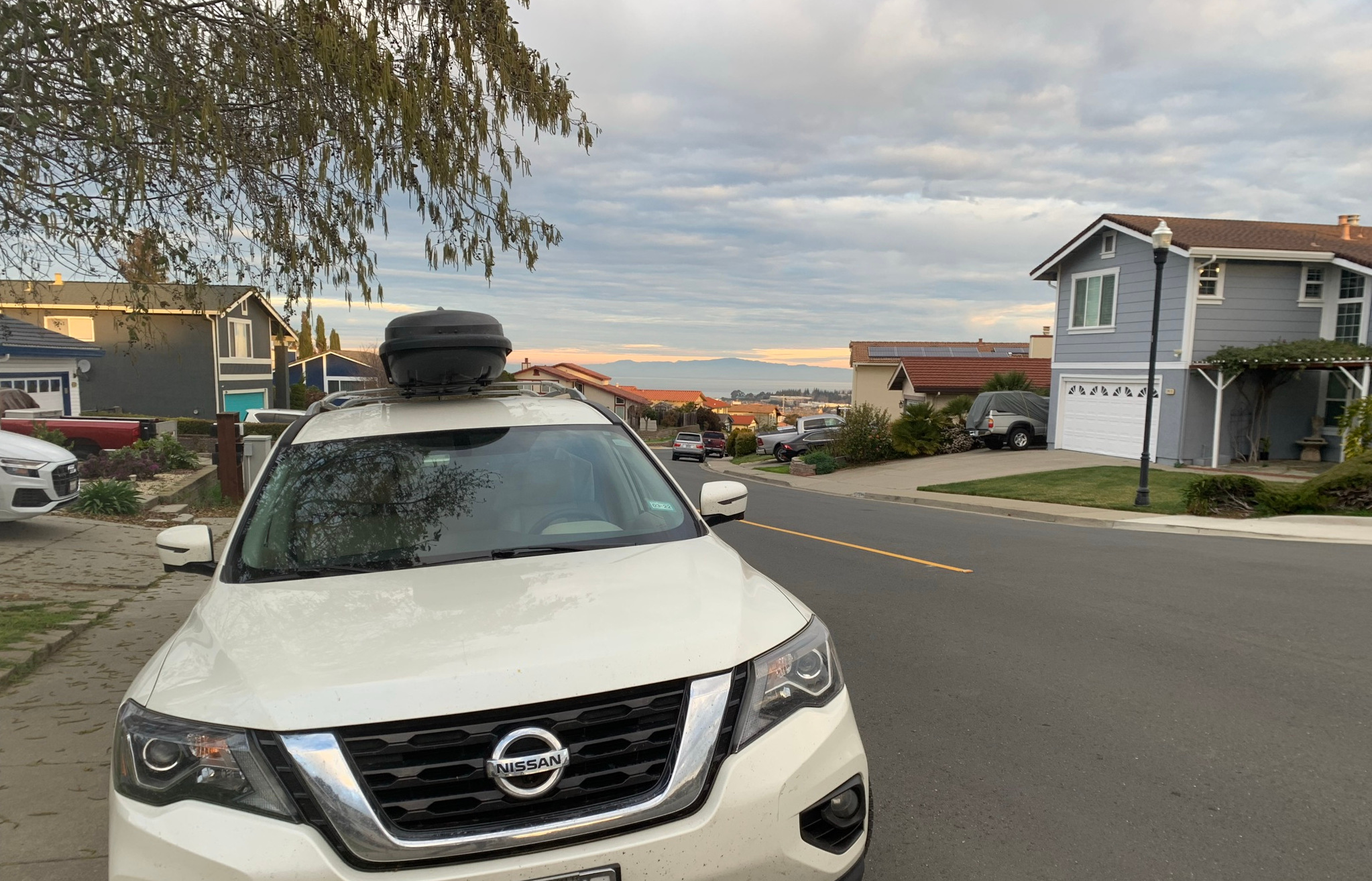
So remember all that talk about wine? Well California produces over 600 million gallons per year. We make our mission to drink all of it.
Heather opens a bottle of Cabernet as she's putting the finishing touches on a charcuterie board. That's right we fancy as hell. We enjoy the wine and snacks while the slowcooker slowly cooks. I meet Heather's husband Kevin in a Michigan State sweatshirt, go Sparty, and their two adorable dogs, Shep and Chloe. Heather leads us on a tour of the house, the highlight of which, in my opinion, is the spacious deck and artificially turfed back yard. The air has just a bit of nip in it. Crisp. Cool. Delightful.
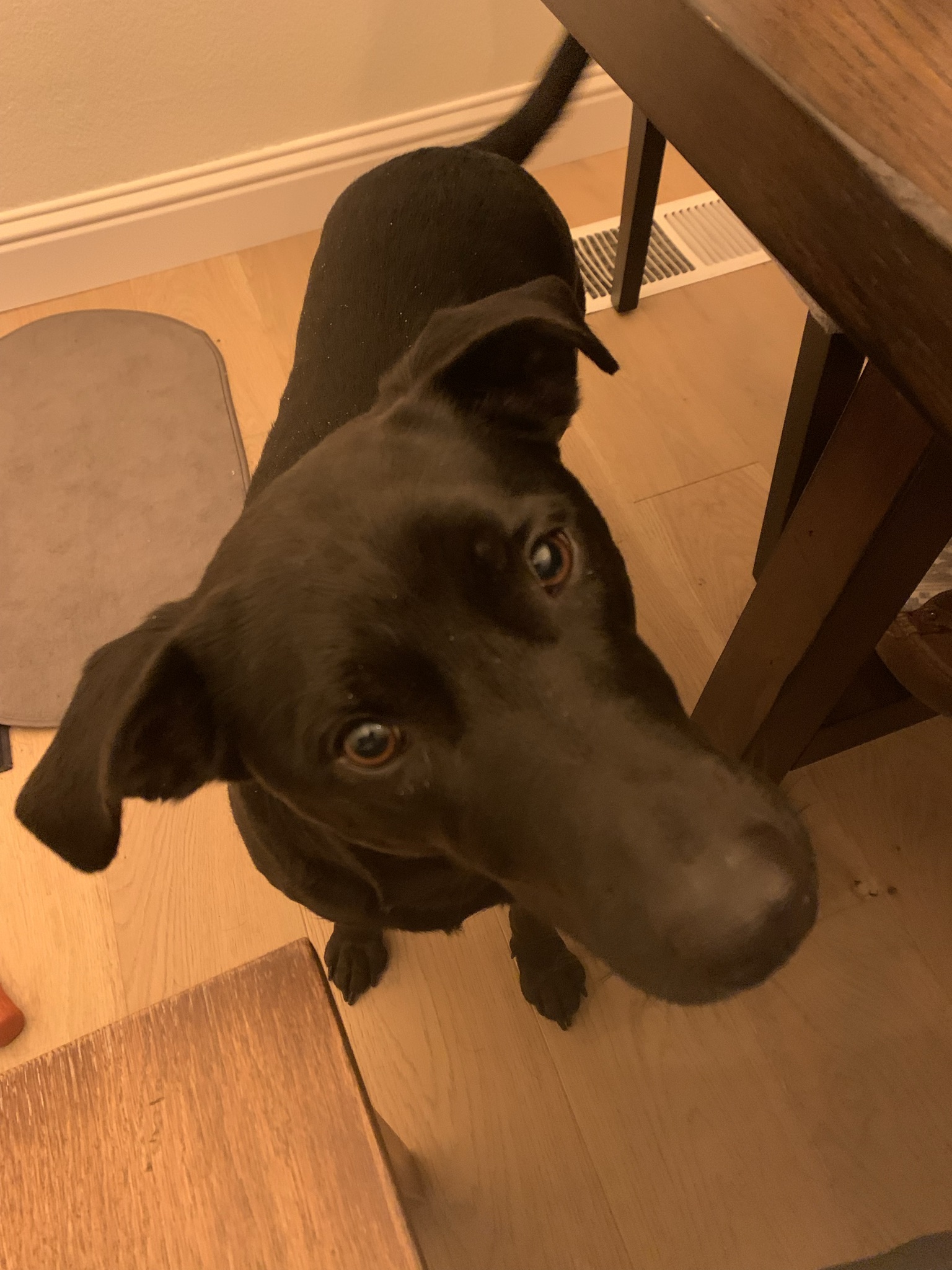
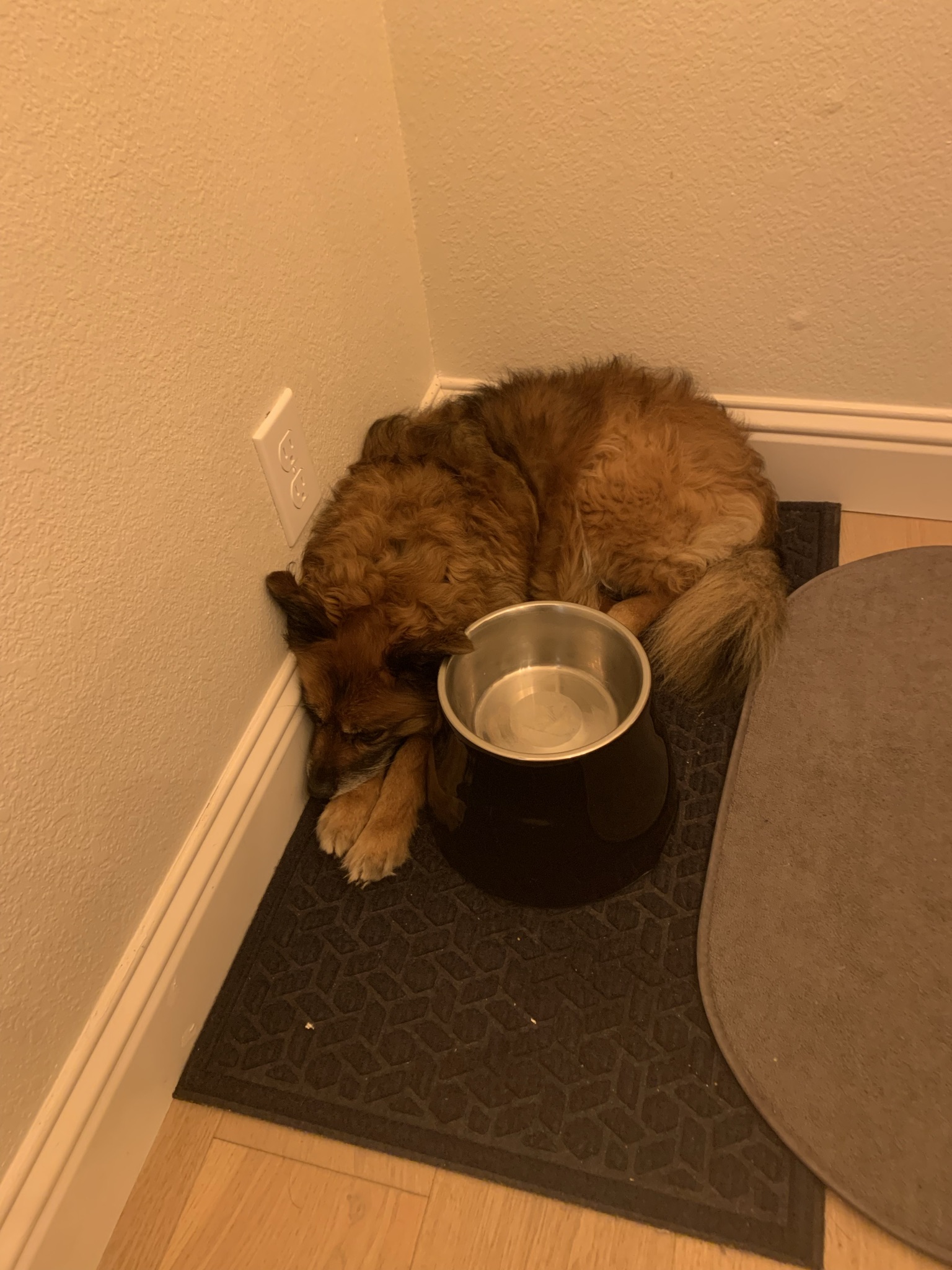
We open another bottle and whip up some pulled pork tacos. And then on to another bottle. And another. I can't say for sure how many bottles we ingurgitated but I have to imagine it was close to 600 million gallons worth.
The next morning I feel surprisingly chipper, likely a result of the deluge of water I drank along with the high quality wine. Kevin & Heather are off today due to MLK day so we make plans to head up to wine country. They are members at a place called Tank Garage Winery, which just judging by the name, sounds like a place I'll like. Their house, being on the northeastern periphery of the bay, is only about half an hour to the southern edge of Napa Valley. It's another 45 minutes of driving through the 30 mile long valley that's completely carpeted with vineyards, row upon row of grapes whizzing by. The valley boasts 475 wineries producing upwards of 1,000 brands in 16 distinct wine-producing regions, each with a distinct microclimate & terrain.
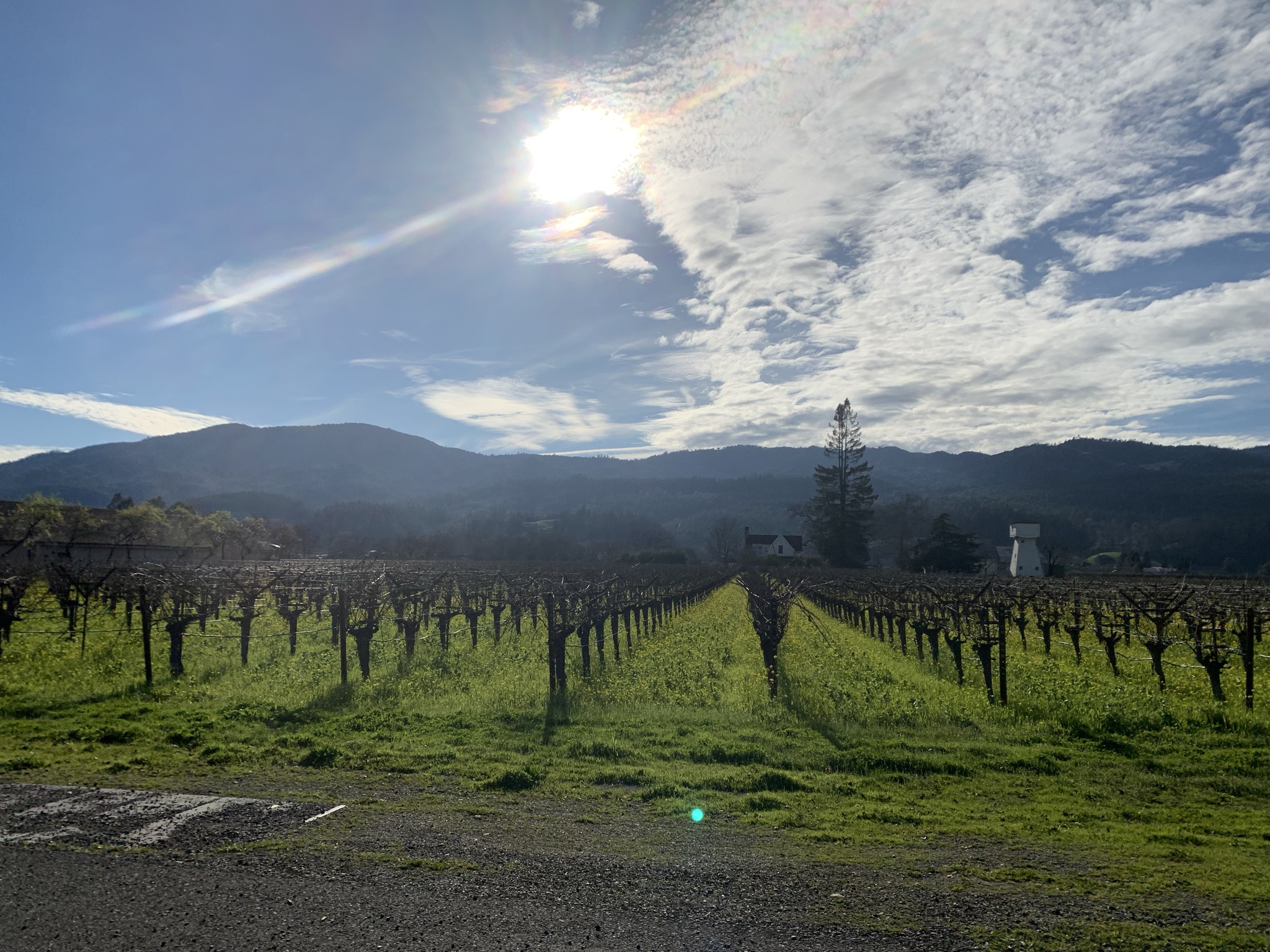
We pull up to Tank just after noon. Heather made a reservation for us so they have a table all set up in the back with a little nametag to denote our VIP status. As we're ganderin' the tasting menu, Aaron comes out to welcome us to the garage. They serve small-batch blended California wines, each vintage completely unique from any that have come before and any that will come after. The vibe is retro-cool & unpretentious.
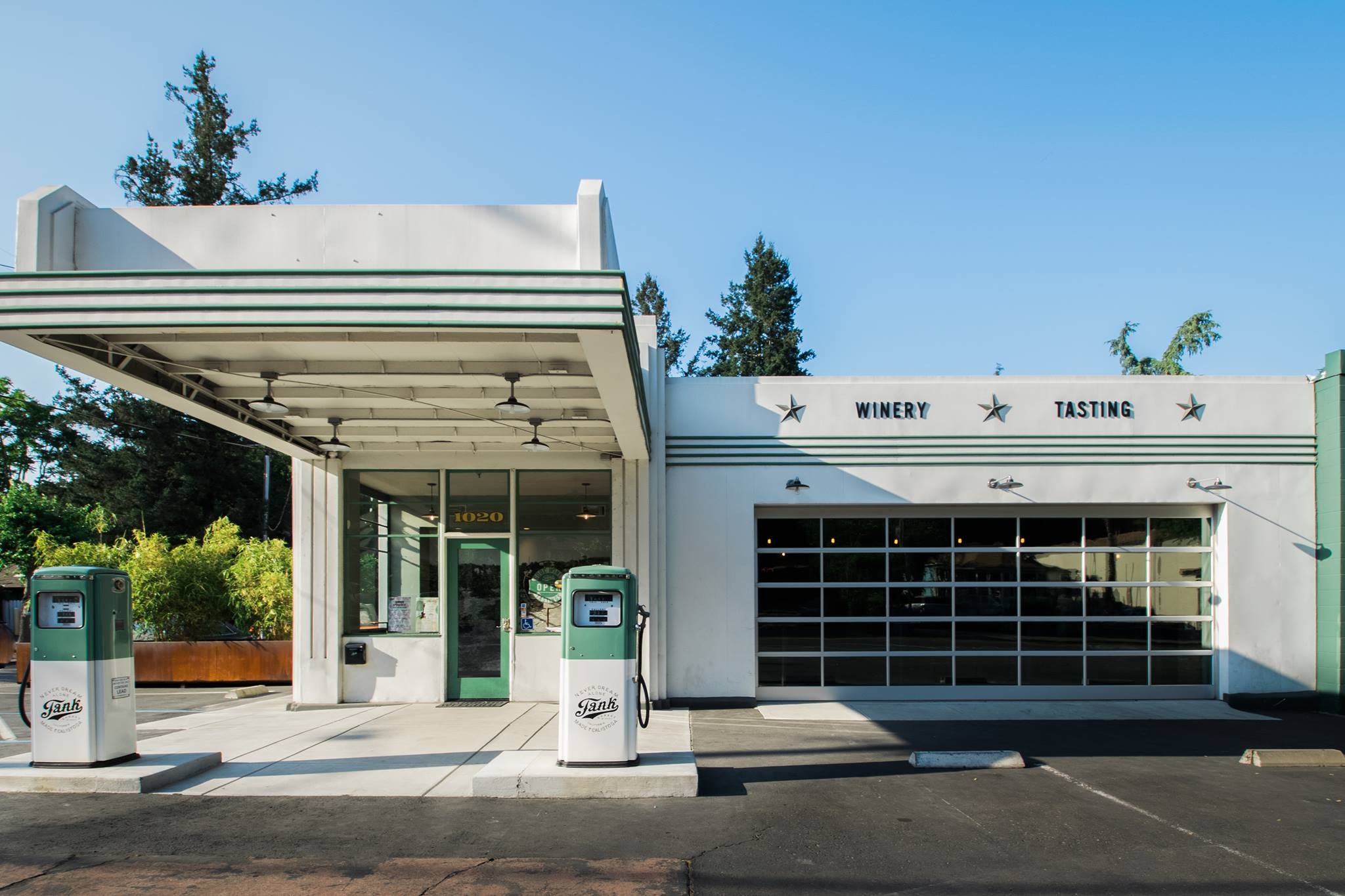
Our first offering, California Gigolo, is a white wine blend of 60% Grüner Veltliner, 26% Roussanee, 8% Chenin Blanc, and 6% Grenache Blanc. I've only heard of one of those. According to the documentation the wine is a quaffable, poundable style from the Edna Valley, a region with long, passionate growing seasons and diverse soils with volcanic and marine sediments and throbbingly rock hard shale. Tastes citrusy to me. Feels like the perfect swill for a hot summer day on a patio. I really don't know much about wine.
Aaron brings out our second tasting, Pleasure Trip, a sparking Pét-Nat white blend of 85% Barbera & 15% Marsanne. Since I have no idea what Pét-Nat means, Aaron patiently explains that pétillant naturel is an old-school method of sparkling winemaking, where the juice is bottled while it's still fermenting, creating "tiny, delicate bubbles." This is in contrast to the more common, modern technique of adding yeast & sugar to still wine, which creates a second fermentation and sparkle. This one wasn't my favorite, but my amateurish palate can't deduce exactly why it ain't.
Our third wine, Benefits of Solitude, is our first red of the day, a blend of 53% Cinsault, 38% Pinot Noir, 7% Grenache, and 2% Mourvèdre. Once again, I have not heard of most of these, but Aaron informs us of the versatility of Cinsault. It's a variety that can change markedly based on how it's processed, in our case it has a nice blend of tart berry flavors with a soupçon of pepper. A very nice fruit.
Our final pour is Sid Vicious, a red blend of 69% (nice) Zinfandel, 13% Grenache, 12% Syrah, and 6% Petite Sirah that's noticeably darker than our previous glass. This is my favorite wine of the day, it's full bodied yet smooth, dark & fruity with with a peppery finish. This would go great with a nice meaty steak, which is probably what gives Kevin a hankerin' for red meat. We decide right there on steaks for supper so I grab a bottle to pair with the beef.
As we settle up with Aaron, I rifle through the t-shirts and I feign outrage when I find they don't have a single shirt in my size. They should get a new shipment in a few weeks so I'll check back on their website every fortnight or so. On our way home we stop off to snag a round of NY strips. Kevin fires them on his big green egg to a masterful medium rare & we enjoy them with the Kid Vicious. We're all pretty wiped out from last night's reenactment of Miles's meltdown in Sideways so it's an early night before our big day in the big city.
Sittin' on the Dock of the Bay
Michael is in the process of launching his own bespoke jewelry design business and wants to follow up with a few jewelry stores from his last trip to SF. I volunteer to chauffer so the next morning we load up the chariot and make our way across the bay. The Bay Bridge dumps us off in the Embarcadero neighborhood, where we hang a Louie into Chinatown. It's almost lunchtime so I suggest stopping for some Chinese before hitting the jewelers. Mikey takes that deal, which leads to us spending the next 20 minutes stuck in a gridlock of windy streets, oblivious pedestrians, and not a single parking space.
We eventually grow weary of looking for somewhere to park so we decide to hit a couple stores first. On our way there, Michael finds a Chinese joint that's Chinatown adjacent and right near our third stop. Good enough for me.
We roll up to the first store and I feel a strange sense of familiarity. Hey! We're right down the street from the Buccaneer! I feel like a local.
I drop Michael off and he returns a few minutes later with a bewildered look on his face.
"I don't know what I did to that woman but she acted like I shit in her cereal"
For whatever reason she just wasn't havin' it today. Maybe she's a Cowboys fan?
The next two stops are more successful, the audience is receptive and excited to check out his collection when he gets his website up & running. By this point I could eat a horse so we hop over to Mama Ji's in the Castro for lunch. I let Michael do all the ordering since he's been to China dozens of times for work at his previous employer. A cheery older man, who I'm guessing is the owner, comes over to take our order. Michael decides on the pork & cabbage dumplings, Shanghai dumplings, shrimp shumai dumplings, BBQ pork steamed buns, and an oolong tea to wash it all down. Now I'm no expert on Chinese cuisine, not to mention authentic Chinese cuisine, but I have to say that every single dish is outstanding. Michael seconds my opinion, mentioning that it's as good as anything he's ever had in China. Mama Ji's really knocked it out of the park.
After lunch we head to our final jewelry store of the day. As I drop off Michael I see that we're only about half a mile from The Painted Ladies, the iconic colorful rowhouses that are as synonymous with San Francisco as the Golden Gate Bridge and Alcatraz. After his quick chat with the proprietors, we walk over to Alamo Square Park, so named for the lone cottonwood tree ("alamo" in Spanish) that stood atop the hill when it served as a watering hole for weary travelers. We encounter surprisingly few tourists and snap a few pics of the Ladies.
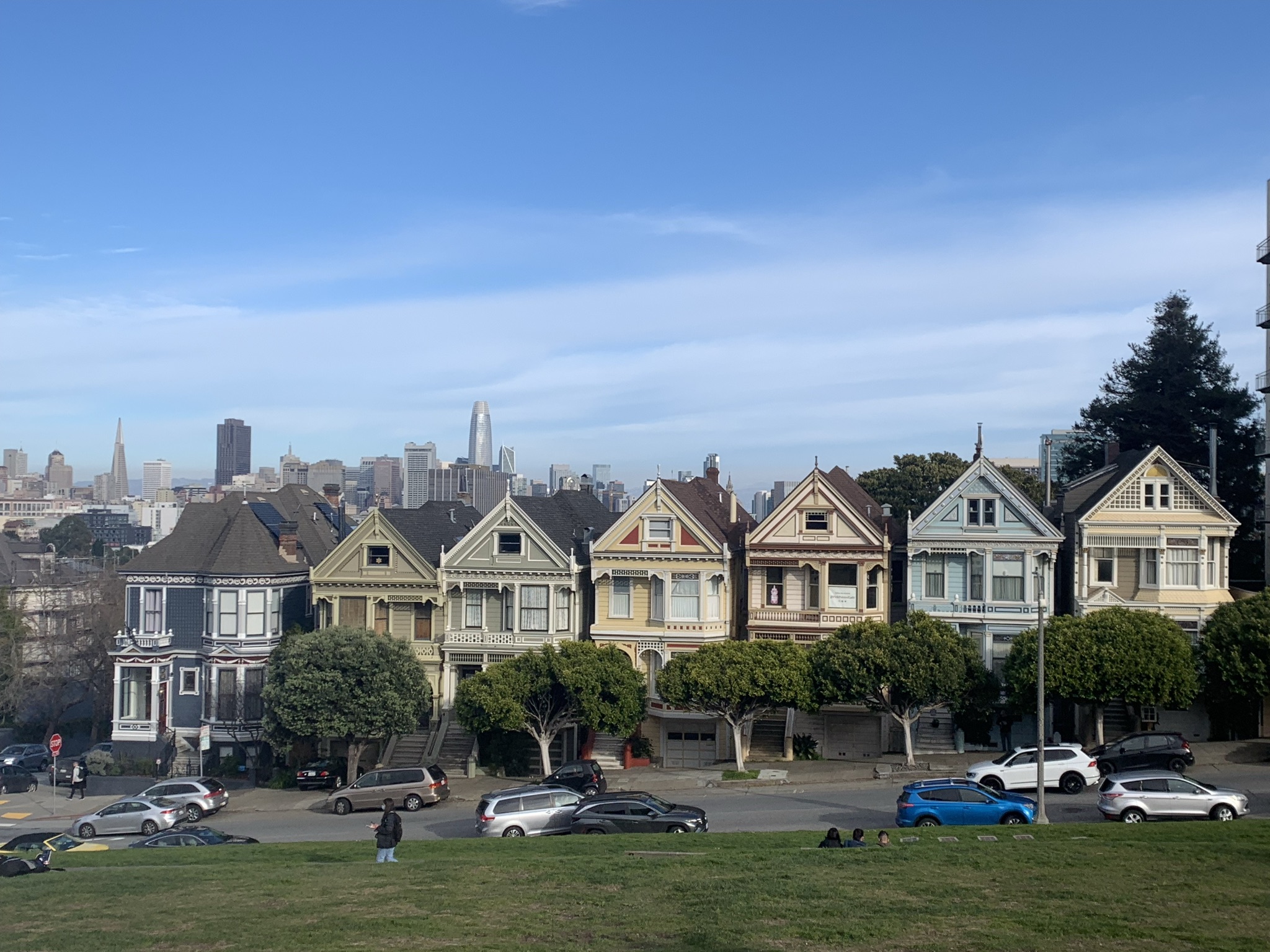
At the far end of the park we gaze up at the Sutro Tower, a three legged lattice tower perched atop a mountain that looks like a UFO docking station. Much to our chagrin it's merely a TV and radio tower, erected in the 1970s to improve television reception in the notoriously hilly city. Right next to the tower on Google Maps, I see a road leading to a place called Christmas Tree Point.
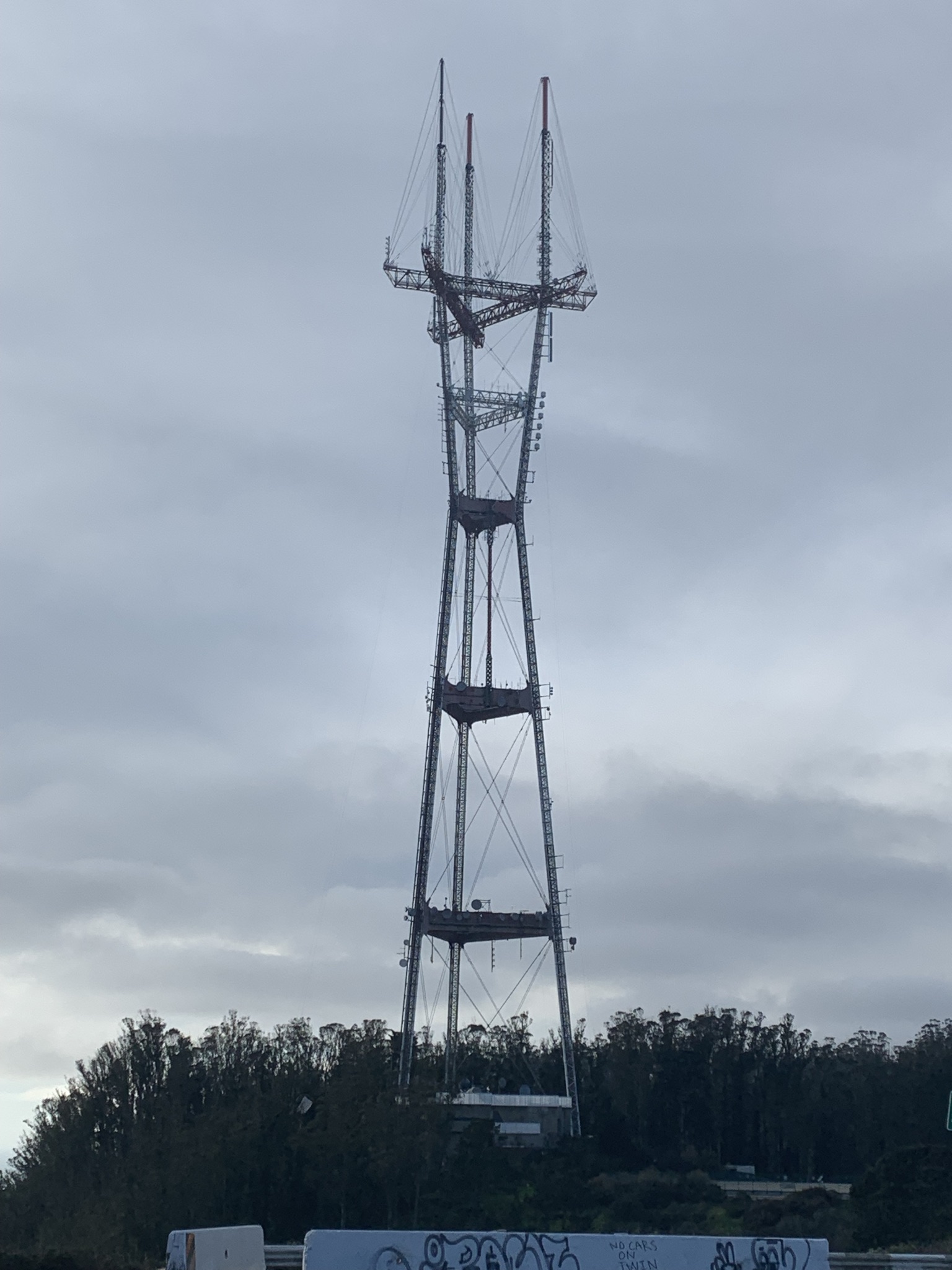
"Hey Mikey, you wanna go check out the top of that hill?"
"How far is it?"
"20 minute drive"
"Hell yeah, let's do it"
We head up some steep winding roads past cyclists whizzing by with the assistance of gravity and others questioning their life choices fighting it. At the top we are treated to stunning panoramic views of the city and the bay. Off to our left stands the Golden Gate bridge, to our right lies Silicon Valley, downtown San Francisco and the low-slung sprawl of the city carpets everything in between.
Behind us lies a trail up a series of steps to an even higher prominence. We make the short hike up the hill to the top of Eureka, the northern peak of two hills that form the area known as Twin Peaks. The views from up here are the same as those below.. only a bit higher. And we're no longer protected from the stinging wind. We don't stay up here very long.
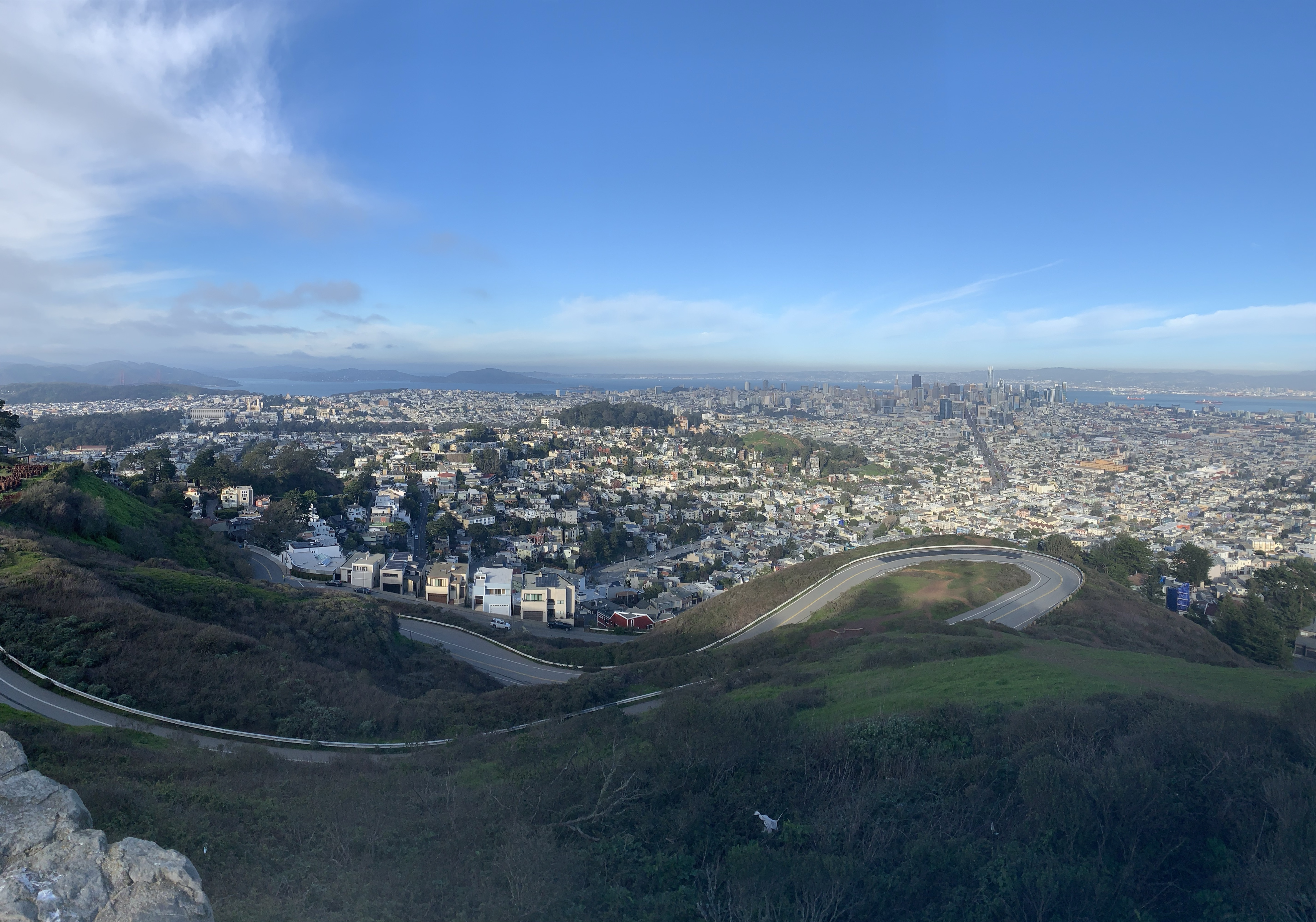
Once back in the car we set our sights on Land's End Park, a smallish park on the very northwestern tip of the San Francisco peninsula. We don't have any particular reason to go there, neither of us have ever even heard of it. But when you look at it on a map it's just daring you to check it out. So we do.
What we discover when we arrive I would never have expected. The top of the park overlooks a haphazard concrete complex abutting the ocean below some small cliffs. The structure is covered in graffiti and parts are filled with seawater. It looks like a modern ruin. Upon cursory investigation I find that it's exactly that.
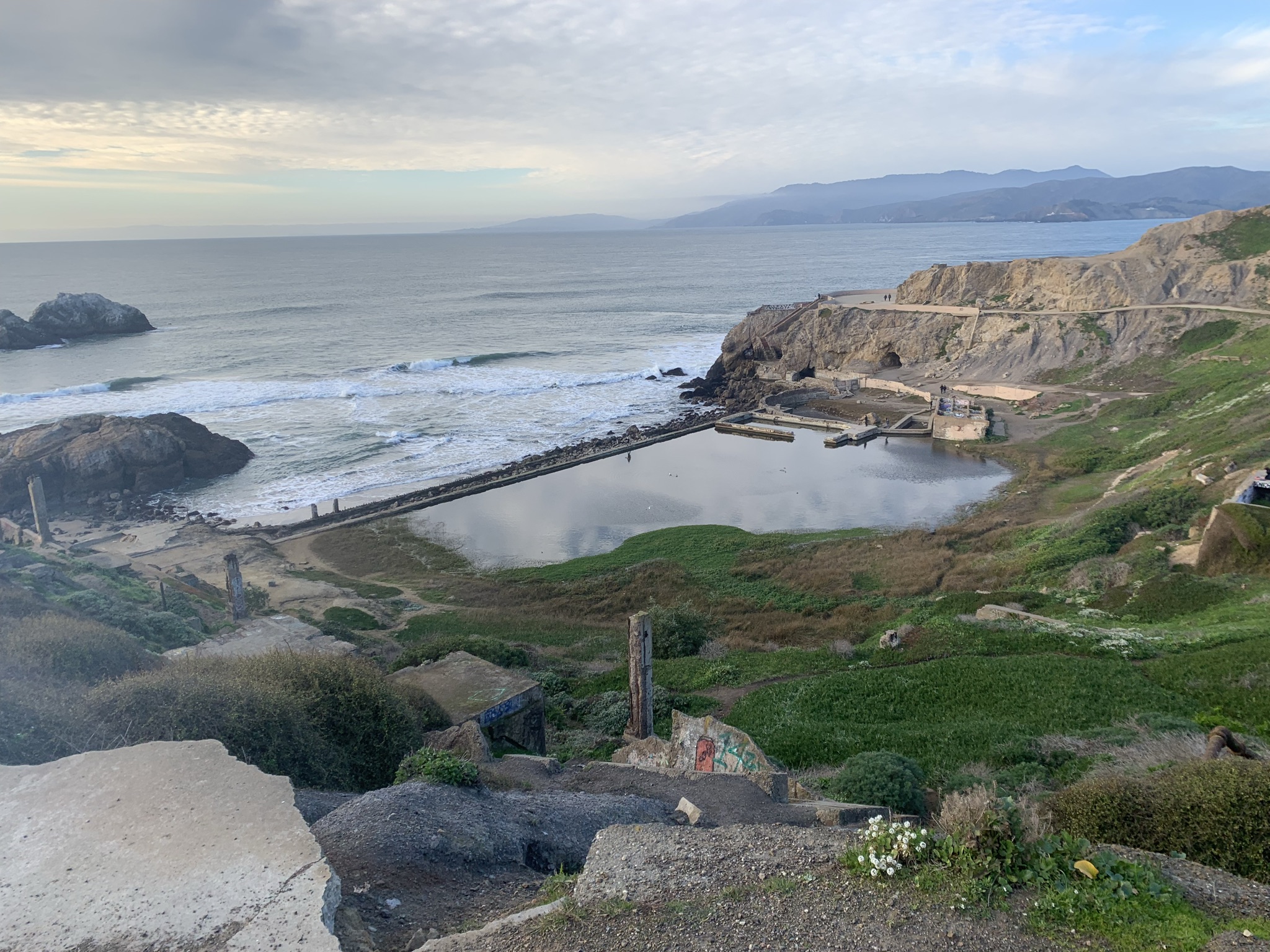
The Sutro Baths complex was a large public saltwater swimming pool facility, opened in 1896 by silver mine engineering millionaire & former SF mayor Adolph Sutro. If you had the good fortune to be an adolescent in San Francisco in the early 20th Century you'd think you'd died and gone to heaven. The Baths featured 7 different pools of varying temperature, diving boards, trapezes, and slides, all beneath a massive glass enclosure for year-round recreating. The Wizard of Menlo Park, Thomas Edison himself, recorded videos of kids slippin', slidin', roughhousin', and engaging in the kinds of antics you'd engage in when dad was working down at the docks.
The Baths could accommodate 10,000 people, and, hilariously, offered 20,000 bathing suits for rent. I don't know what's more absurd, bathing suits for rent or having twice as many as your ludicrous capacity. How much space would you need to store 20,000 old-timey bathings suits? If all that wasn't enough for you the Baths boasted stadium seating with a capacity of 3,700 seats for swimming competitions, beauty contests, and dwarf boxing matches. That's right. Sutro Baths.
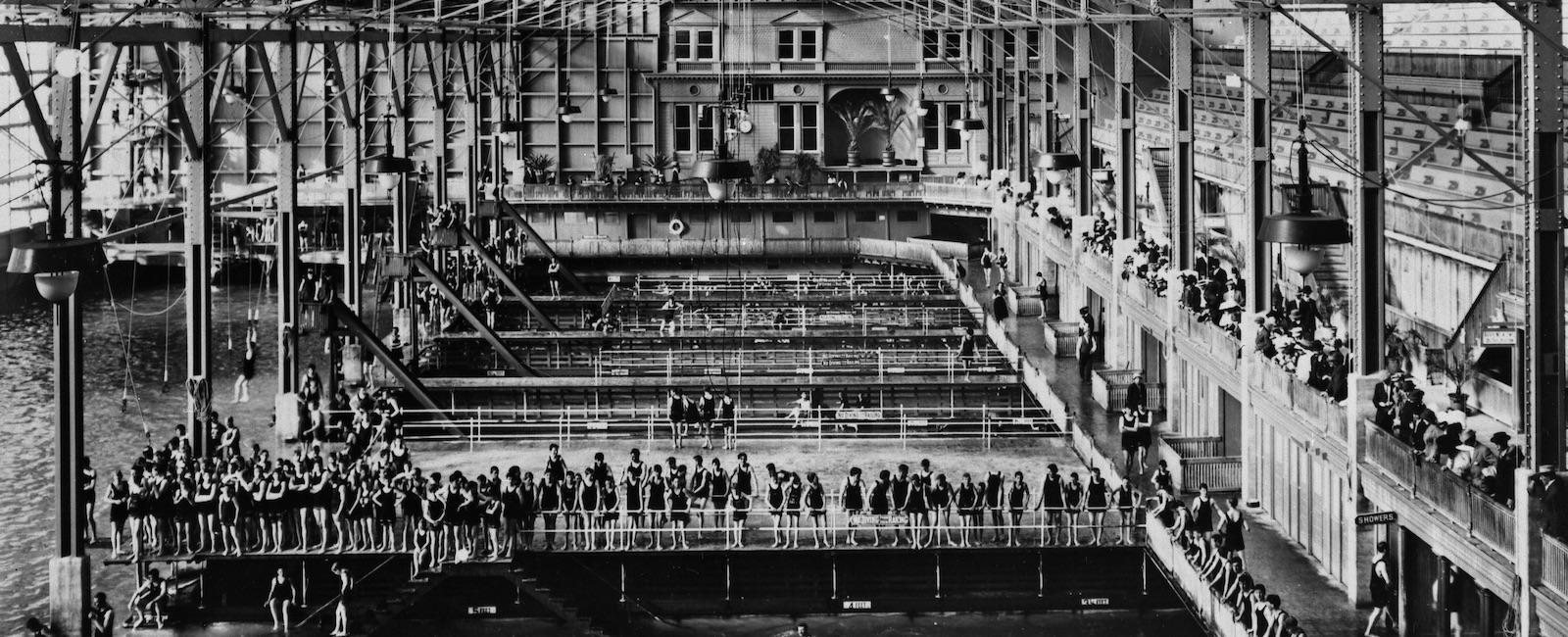
Unsurprisingly, this absurd amalgam of aquatic adventures couldn't seem to turn a consistent profit. The Baths fell into disrepair and were sold to a developer in 1964 to build a high rise condo. During the process of demolition a fire burned down what was left of the structure and the developer shelved the plans. What's left is an eerie reminder of what once was.
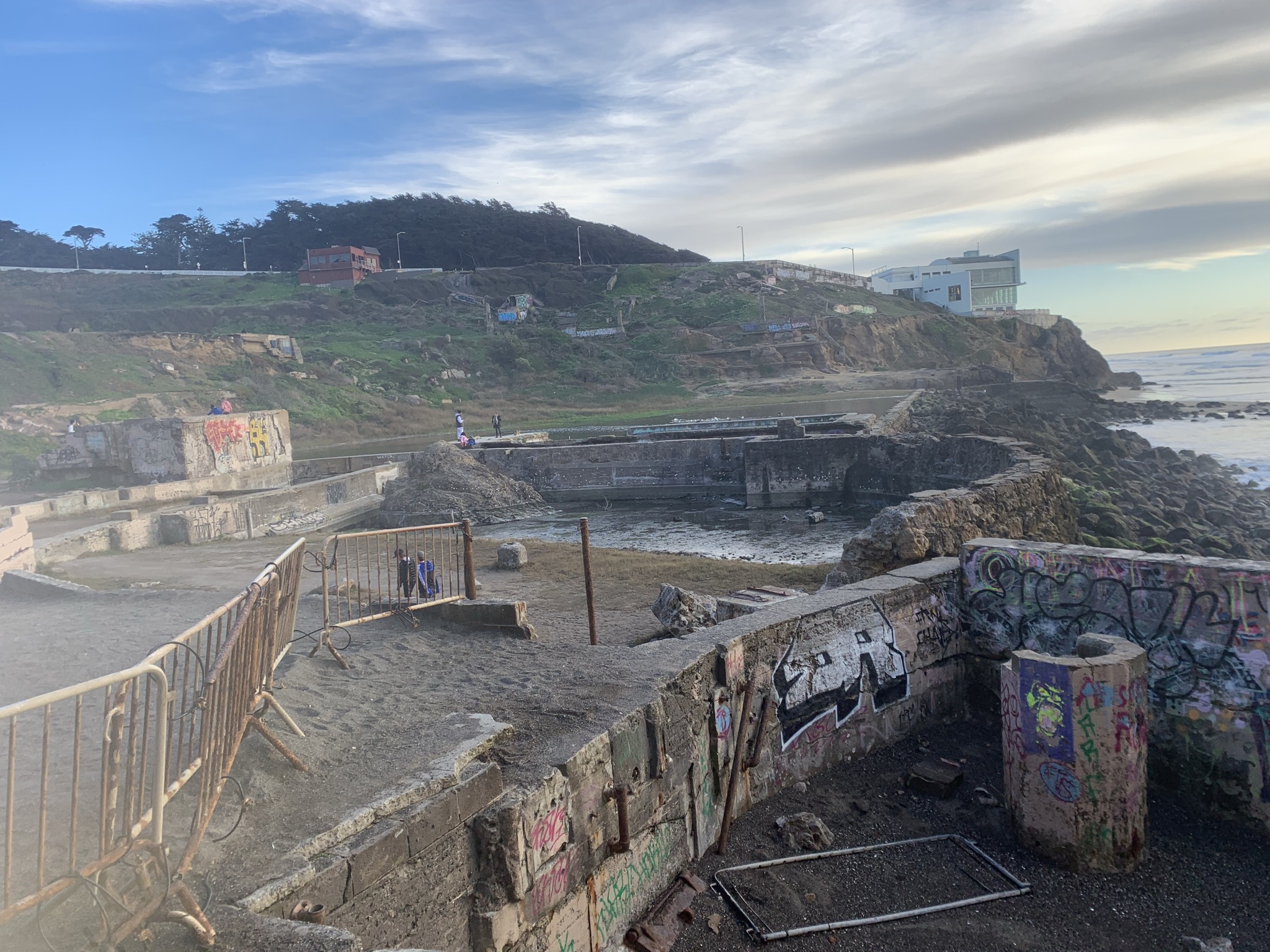
While wandering around the ruins Michael and I discover a pretty sweet cave, which Michael dubs "the murder cave". A cave that I later learn was actually a tunnel bored through the bluffs of Parallel Point to carry away debris from the construction of the Baths. There's actually a whole series of tunnels criss-crossing the point that were used for operation and maintenance of the natatory funhouse. All except our little hallway have been closed off for safety's sake, something that would never happen back in the 1890s.
We make our way back to the car and I have one more stop in mind before home. We cross over the Golden Gate Bridge and take the first exit for Sausalito. A glass of wine by the water sounds like the perfect cherry on top of a delightful little San Francisco sundae. As we pull into town Michael perks up.
"I'm not that big a fan of San Francisco but I really dig this place, what's it called? I could live here"
Ah Sausalito.
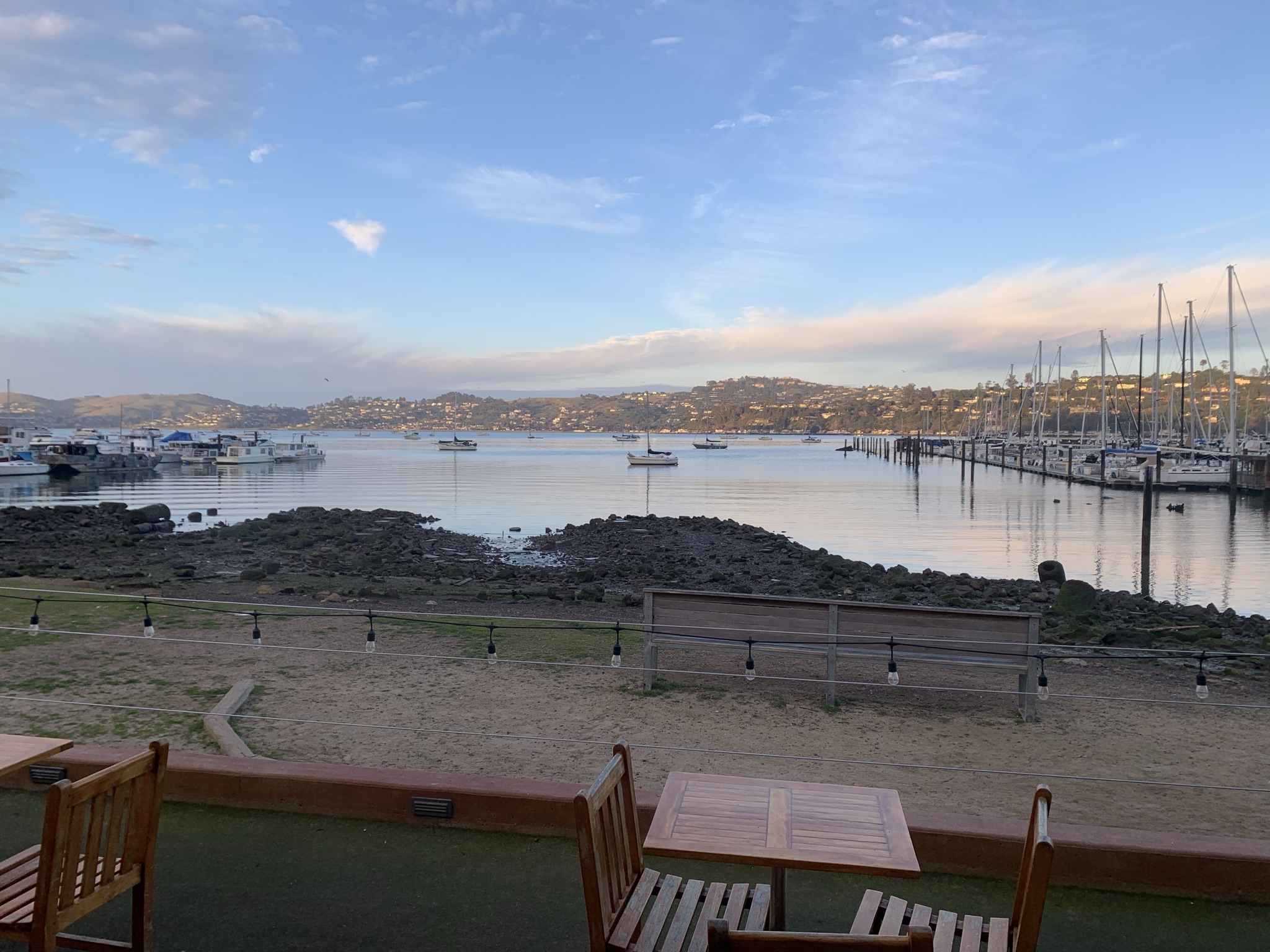
We pull up to Bar Bocce where they seat us around big outdoor fire. We order a carafe of Peregrine Ranch Jupiter Sangiovese and soak in the laid back vibe of the town. If only we had a few million dollars jangling around in our pockets. We dump down the wine and make our way back to Hercules just before sundown.
For supper chef Michael has prepared a menu of seared salmon with roasted vegetables and a chocolate tarte for dessert. I fancy myself a decently competent culinarian but I'm still at the level where I need to follow a recipe. Michael just knows what needs to be done in the kitchen. He adds ingredients by feel, he pulls the fish at just the right moment, he says things like "do you think the salad needs a little more brightness?" He's great to have around because he doesn't trust anyone else to meet his standard, so all you have to do is stand there drinking wine and maybe keep your eye on some onions browning on the stove.
As expected, dinner is exquisite. Since we have a big day on the road tomorrow we hit the sack early, alarms set for the first train bound for the Beaver State.
Oregon Trail
As always seems to be the case, said alarms squawk much, much too soon and we're on the road chasing that red compass needle. Our final destination is Bend, Oregon, our home base for the next few days of skiing. However we have scheduled a detour to Crater Lake, which I have seen from a plane and need to see in person.
It doesn't take long for us to enter the Sacramento Valley, the northern half of California's Central Valley, which provides more than half of the fruits, vegetables, and nuts grown in the United States. The valley blends the monotonous with the dramatic - miles upon miles upon miles of almond, walnut, and pistachio trees, flanked on either side by the craggy ridges of the Klamath Mountains to our left & the Sierra Nevada to our right. Speaking of pistachios, Josh Allen's family's pistachio farm is just 2 hours south of here... Not that I looked that up or anything...
About 2 hours into the drive, smack in the middle of the valley, the crest of Mt Shasta pokes over the horizon. I was not expecting to see his snow covered dome so soon,- we're still 150 miles away - but his presence is welcomed more favorably than any unexpected guest I've ever encountered. As we continue our trek North the mountain ridges on either side close in, until we reach the town of Redding, perched in the foothills of the Cascade Range.
Here the road begins its slow, winding journey up the spine of the Cascades, around the western shoulder of Mt Shasta, where we happen upon the town of Weed, California. It's as kitschy as you'd imagine. The signs, the shops, the paraphernalia. It's all about weeeeeeeeeed. Thankfully I don't touch the stuff. We pass through town without fanfare and continue our journey northward.
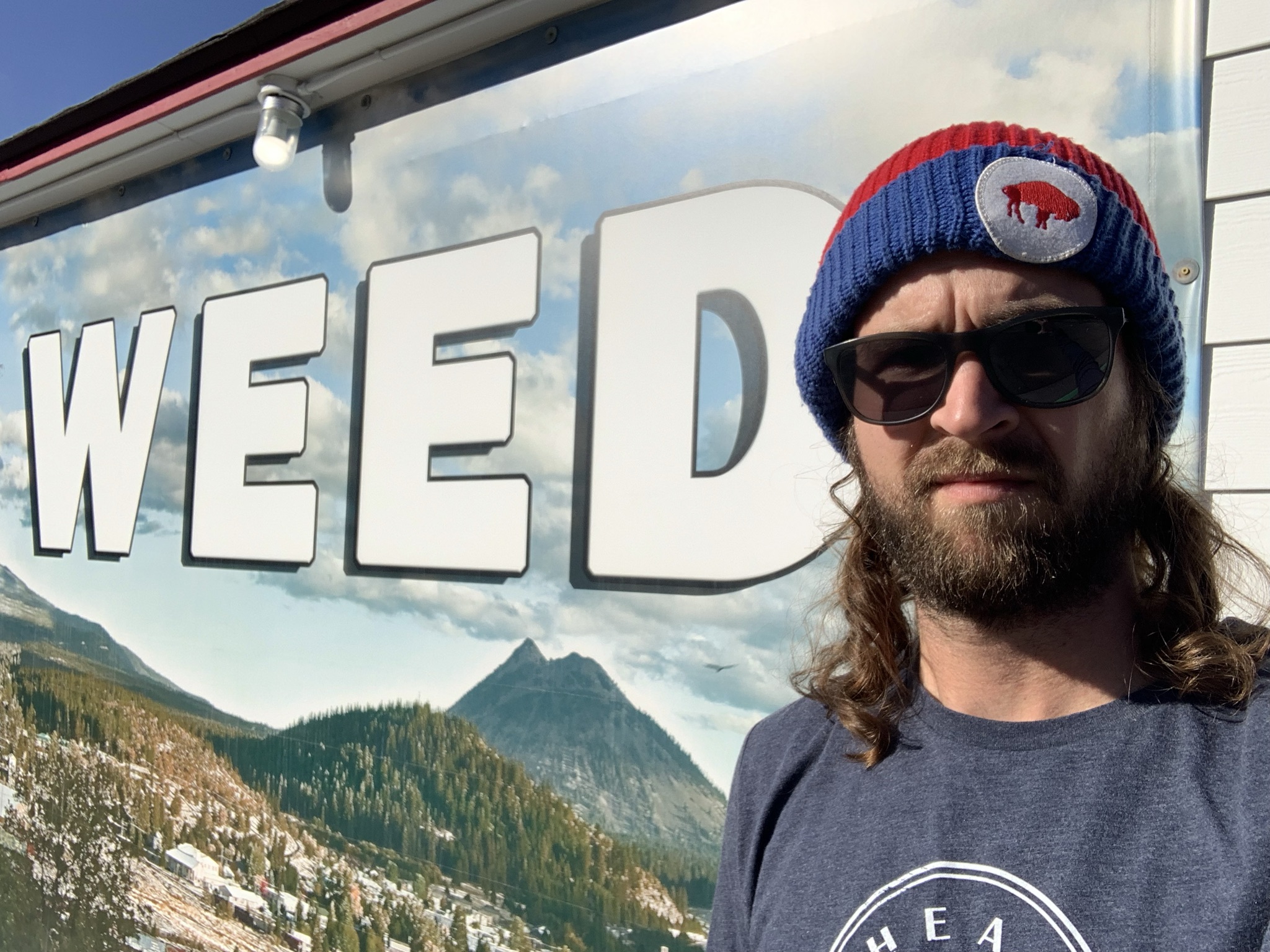
We drive through an hour of high desert before reaching the road that guides us to Crater Lake, a meandering two lane stretch through snow covered fields. It's hard to tell which peak the lake resides upon, however it appears that fog is smothering any of the peaks that it could possibly be. We still have another half hour to the rim, if we turn around now that's an hour saved if the lake is veiled in fog.
I thought it but didn't say it out loud.
We keep venturing on.
The final ascent is demarcated by a National Park Service hut, where a cute park ranger named McKenzie tells me she has no idea how the weather is at the top. She hands us a pamphlet and we continue our journey up another few miles of switchbacks. As we ascend, Michael reads off some facts and figures.
The lake sits atop Mount Mazama, a volcano that grew to 12,000' over the course of 400,000 years. 7,700 years ago a particularly violent eruption threw a colossal slag of pumice and ash skyward, causing the top of the volcano to collapse on itself. Centuries of rain and snow have filled the basin, forming a deep blue lake of remarkable color and clarity. It reaches just over 6 miles at its widest point and at 1,943 feet deep, it's the deepest lake in the United States and 9th deepest in the world.
Then Mikey's face turns to a frown, "in the winter, the lake is typically shrouded in fog 50% of the time."
Shitburger.
As we bank around the final curve into the park we brace ourselves for disappointment. Miraculously, the fog has held off and the visibility is immaculate.
Of the parking lot.
I don't know what I was expecting, people need to hitch their steeds somewhere. Unfortunately the hitchin' post doesn't overlook yon' rimrocks down into the caldera. Michael and I strap on our hiking boots and head on down.. thataway? There are no signs, demarcations, or indications of which way you should head to see the lake. There's another group of folks who, while they may not have been here before, seem like they've been somewhere like here before. We follow them.
The road winds around a substantial visitor center that's closed for the season then veers off to the right. We would have kept following the road if it weren't for an old couple shuffling their way down a set of snow stairs that have been carved into the 5' wall of snow cleared out by the plows. We adjust course and follow their trail only to be treated to the most miraculous view I've ever seen in my entire life. Not one of the most miraculous views. The most miraculous view. I feel a bit like a fraud even sharing photos. It's less of a view than an experience.
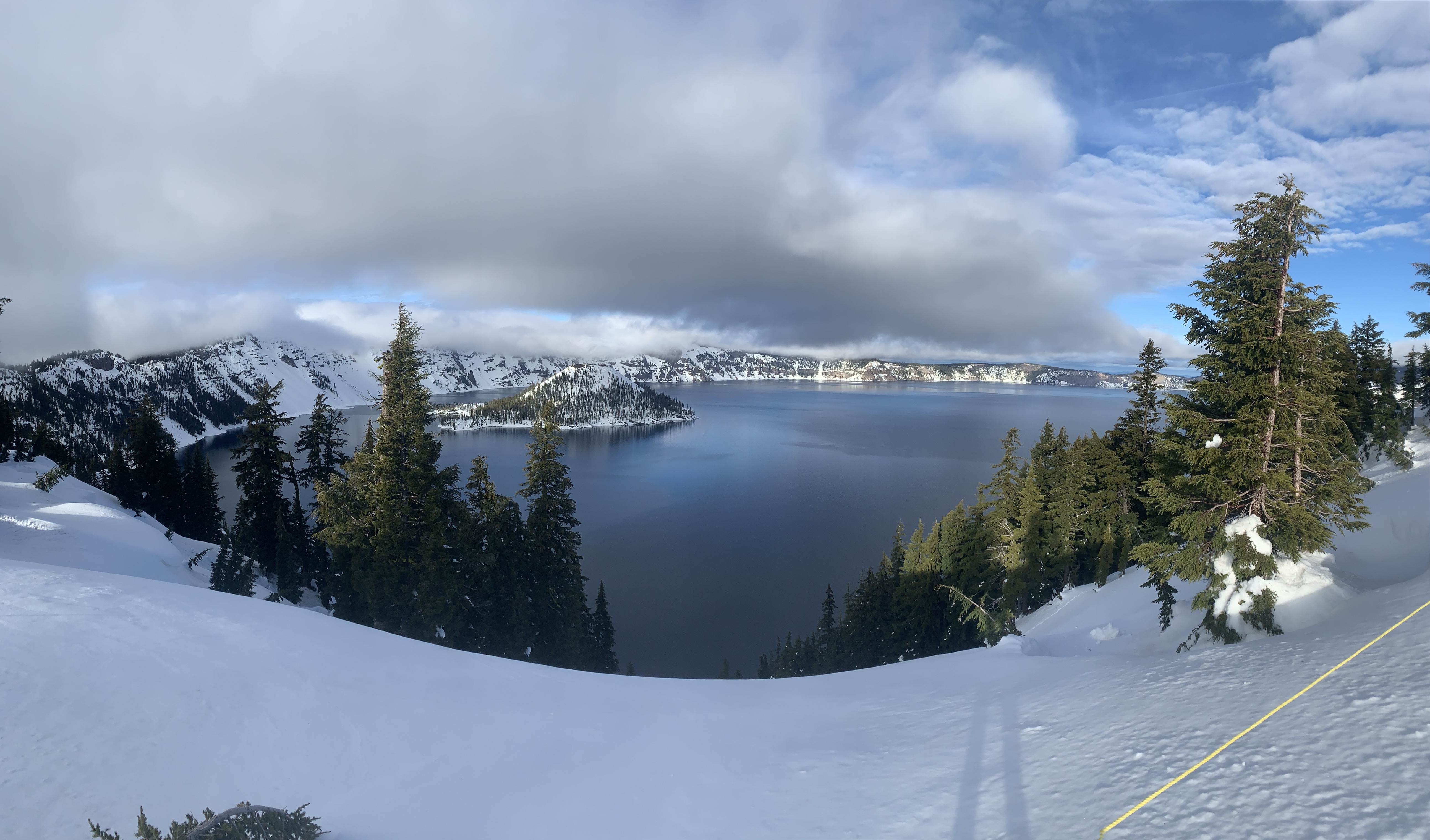
Crater Lake is the world's timeline cleanser.
We might have just stayed there, lived off the land, been citizens of Crater Lake. It's the most beautiful place I've ever experienced. Just as we considered the life we'd lead if we became volcano people the fog rolls through. Our timing was incredible.
Speaking of time, we're behind schedule to Bend.
Bend
We reluctantly leave el lago and wander back down the volcano. I make sure to get directions from McKenzie because, y'know, I might lose reception or something. I back myself into a corner, though, because her directions and my phone differ a mere 100 yards from her hut. Phone says right, McKenzie says left.
I go left.
I doubt she even watched. Or gave two shits. Left or right we arrive in Bend, Oregon 2 hours later. Coincidentally, Mikey has a friend from college who lives in Bend also named McKenzie. We pull up to their house right around 6 PM and I meet her, her husband Adam, and their dog Fritz. We chat for a bit and saddle up for supper at Bend Brewing, home of some of my favorite wings I've ever had, maybe in my top 5.
We sit down and I immediately see a glaring omission on the menu. Our waitress comes over
"Did you get rid of the wings?"
"Just temporarily, there's a really bad wing shortage right now"
NOOOO! This whole supply chain thing has gone too far. Take my microchips but not my wings.
We reluctantly settle on some Sriracha cauliflower, which perform admirably in their duties as a backup for the wings. Next app up.
I decide on a flight to experience the full range of Bend Brewing's tasty suds. The beers are brought over by a fella in a Chiefs mask, who, when seeing my Bills hat & Mikey's Bills hoodie, spends about 10 minutes talking about the upcoming game. After downing the flight, I decide on a pint of Tropic Pines IPA, which while I didn't know at the time, was the same beer I drank here last year. I know what I like.
We settle up and I head on down to the Econolodge, my accomodation for the next few days. It's a real dump, but who cares I'm here to ski. I tuck in just before 10 and leave a key for my buddy Landon, who is joining me for the alpine activities. He hasn't been snowboarding in 5 years but wanted to get one last trip before his lovely wife Damara gives birth to their first child. His flight gets in late & should get here around 1 AM.
This was a fun little jaunt but tomorrow it's back to skiing.